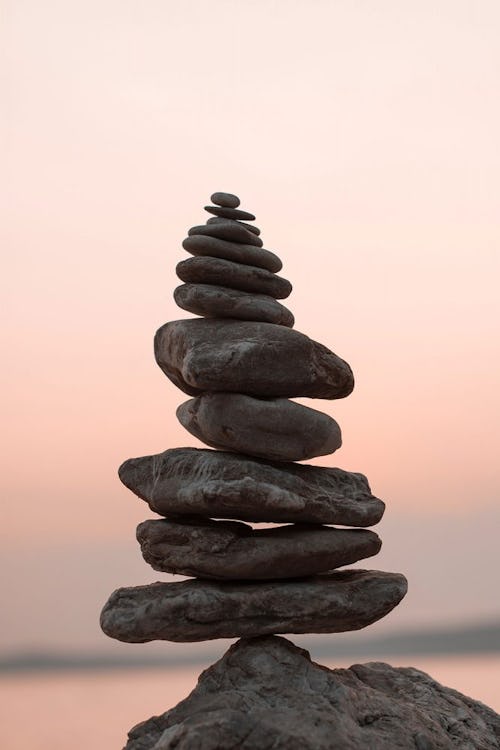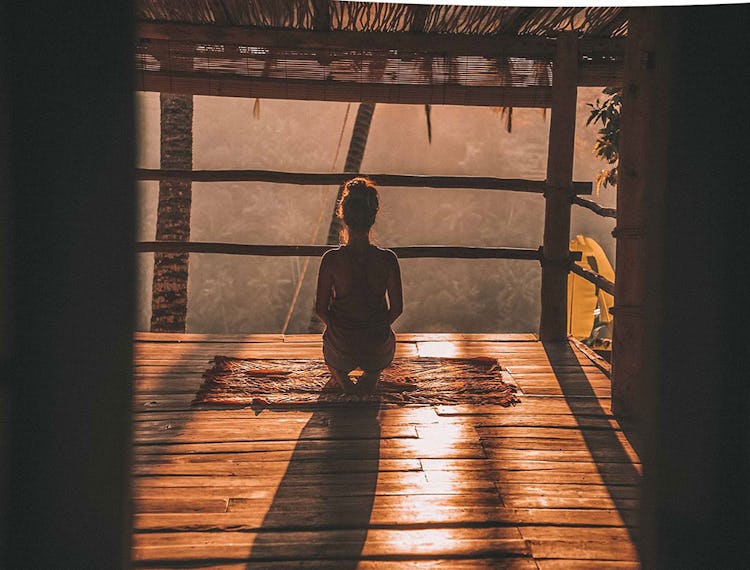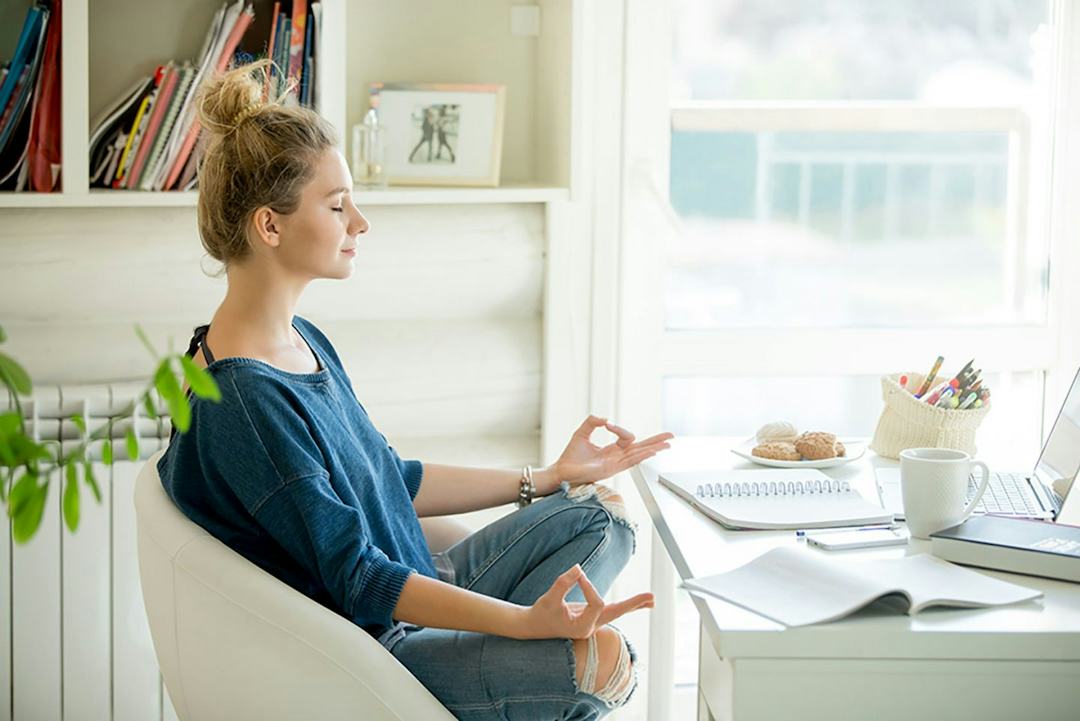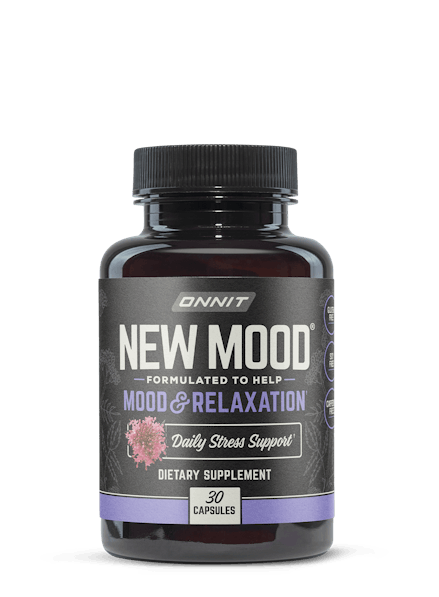Whether you’re talking about celebrities, pro athletes, or millionaire entrepreneurs, successful people tend to have a few things in common. Maybe they get up early in the morning, or they write down short- and long-term goals for themselves, but one commonality that comes up again and again among the most driven and positive people in the world is the practice of meditation.
You may choose to meditate to sharpen your mind for the day ahead, or merely to calm it down, but sneaking in even a short session in the middle of a busy morning can pay more dividends than you imagine.
Why Meditate In the Morning?
Science is beginning to prove what yogis, monks, and Kung Fu masters have known for centuries: that meditation can help to relieve stress and even serious medical conditions.
A 2014 review of 47 trials that observed more than 3,500 people concluded that meditation practices reduced subjects’ anxiety, depression, and pain. Another study that same year demonstrated benefits for patients with chronic insomnia.
According to Cory Allen, a meditation coach in Austin, TX, and the author of the upcoming book, Now Is The Way, meditation is beneficial at any time of day, but he personally does it in the morning in order to prepare himself for a more productive day. Doing it in the morning, he adds, will also increase the likelihood that you do it at all. Get it out of the way early, and you won’t forget to meditate later, or blow it off.
“People often tell me they want to meditate,” says Allen, “but it never ends up happening because they look at it as a chore.” To establish meditation as a habit, you have to build it into your schedule just as you do showering, drinking coffee, and brushing your teeth.
Exactly when you do it is entirely up to you, but Allen suggests treating meditation like an appointment and keeping it. “Make it a non-negotiable,” he says. Aim to meditate at the same time every day. If you think it will be easier to do it first thing upon waking up, before your day starts getting hectic and rushed, simply sit up in bed and do it right away. “The more you do it, the more the benefits will compound,” says Allen. Some meditation is much better than none at all, but if you can, aim for five sessions a week (varying lengths each session is OK). “If you can do it Monday through Friday, by the time Friday rolls around, I bet you’ll feel way different,” says Allen. The more consistently you meditate, the more you’ll get accustomed to it, and the more you’ll want to keep doing it. Meditation will become something you desire to do, and not another task you feel obligated to complete.
“I meditate in the morning because I want to have the most clear-focused and present mind I can have for my day,” says Allen. (See “The Best Morning Meditation Routine for Clearing Your Head” below for step-by-step instructions for a great meditation.)
How Long Do I Need to Meditate For?
According to Allen, any amount of meditation is beneficial. If five minutes is all you can spare, that’s fine. Of course, longer sessions will allow you to relax more and get into a deeper meditative state. “When people ask me how long to meditate, I just say, ‘Until the peace comes,’” says Allen. If you’re rushed, set a timer for as long as you can spare, but, ideally, you’ll meditate until you feel your body and mind let go. “I like 20 minutes,” says Allen, “which can let you get a really deep meditation, but still doesn’t take that long.”
If 20 minutes seems like a lot, and more time than you can spend “doing nothing,” take a moment to consider how much time you already spend scrolling through pictures on Instagram (of people you don’t even know…).
The Best Morning Meditation Routine for Clearing Your Head

Allen’s morning routine is as follows: Wake up, drink coffee, run three to four miles, shower, dress, and meditate. Contrary to what you might believe about coffee, Allen says it helps him meditate. “People think you shouldn’t be wide awake when you meditate, but don’t confuse sleeping with meditation,” he says. “You can have a present and energized mind while being relaxed and dialed in—and that’s the state you’ll find you get to with practice. Your mind is very active and present, sharp and clear.”
Allen says that using caffeine to aid meditation is a practice that long predates Starbucks. He points to a legend of a bodhisattva whose monk disciples kept falling asleep while meditating. “So he ripped his eyelids off and threw them on the ground, and from them grew green tea leaves,” says Allen. The bodhisattva then brewed tea from the leaves and served it to the monks before they meditated so that they stayed awake and focused.
Of course, it goes without saying that Allen doesn’t advise drinking tea made from eyelids, and cautions that caffeine (er, from any source) may not work for you as well as it does for him, so pre-meditation coffee is optional.
At any rate, when you’re ready to meditate, follow these steps.
1. Get quiet.
Get away from noise, distractions, and electronics. However, particular kinds of music can be helpful, such as binaural beats—music that directs one tone into one ear and a different tone into the other. The difference in the frequency of the two tones stimulates your brain and guides it to the state of mind the music is designed to lead you toward. There are binaural beat tracks for various different goals, such as better sleep or relaxation, and Allen sells them on his website. Binaural beat music may seem strange, but it doesn’t sound that way. Tracks are usually packaged as nature sounds, such as falling rain, and are pleasant to listen to.
Allen recommends the Opening Eye beat on his site for beginning meditators, which is $5 (but you can use the code word “Astral” for a discount).

2. Get comfy.
Find a comfortable position to sit in. You could be in a chair, on your sofa, or on the floor. Allen recommends the half-lotus position—sitting on a pillow with legs crossed in front of you, one foot resting on the opposite thigh and the other foot tucked under (you’ve seen it in yoga class). Keep a long spine and rest your hands on your knees.
If you suffer from lower-back pain, an even more comfortable posture might be seiza, a Japanese style of sitting where you kneel on the floor and sit on your heels (again, place a pillow under your butt for greater comfort).
3. Breathe.
Close your eyes and try to relax. Take slow, deep breaths, and do your best to keep your mind on the rhythm of your breathing. Of course your thoughts will wander, but Allen promises that the more you practice the easier it will become to keep your mind clear. When you catch yourself thinking, “just acknowledge that the thought got your attention and it will go away,” says Allen. Gently refocus on your breathing. Trying hard to think of something else or exploring that train of thought will only make it worse. “There’s a Zen saying,” says Allen, “that you can invite your thoughts in, but don’t serve them tea.”
Most importantly, don’t get frustrated and think you’re wasting your time. Keep breathing and trying to relax, and you’ll improve over time.
4. Let go.
Allen says that you should breathe in meditation the way you do when you sleep—fluidly and softly. You need to relax every muscle, and this goes double if your main goal with meditation in the first place is to reduce stress and promote peace of mind.
“You can gamify it a bit,” says Allen. “With every exhale, try to relax a little bit more. See how much you can let go.” As you relax some muscles, you’ll become aware that others are tight, so direct your attention to them and release them in sequence. “Allow your armor to melt off,” says Allen, and you’ll begin to feel like you’re floating.

5. Ask questions.
When you feel your mind has quieted down and you’ve relaxed physically, you can start to use meditation for its greatest purpose—to become enlightened. Maybe not to the level of the Buddha, but at least about your own life and things you want to achieve.
“I start to ask my own mind questions,” says Allen. For example, “What do I need to achieve today to fulfill my long-term goal? What are the next steps I need to take to sort out this situation? How do I need to realign my focus to better achieve my goals?”
Then wait and see what floats to the surface.
The breathing you’ve already done will help to clear away the normal chatter in your head, so it should be much easier, at this point, for you to think about what you want to work on objectively and with focus. “It’s like dialing into a radio station you want to hear instead of just getting static,” says Allen. “The resolutions will come forward.”
While questions are coming up, don’t try to actively answer them or problem-solve. The more you try to “grab” at thoughts and hold them down, the harder it will be to let your subconscious thoughts come out. It may sound a little esoteric, but think of your mind as a mirror (ever notice that thinking is called “reflection?”) When it’s racing and unfocused, the mirror is shattered, and you’re scrambling to pick up fragments of thought that you can never piece together into a whole. You can’t reform the mirror to get a clear image of who you are and what’s in front of you.
“By moving the intellectual mind out of the way,” says Allen, “we allow a unification of elements that eventually becomes conscious thought. Those fragments come together and the mirror becomes unbroken. You’ve been reflecting on pieces of a shattered mirror within you, but when you let those pieces become one, you can see the image.”
For more tips from Allen, see our previous guide to meditation HERE.

)







